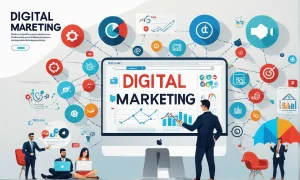In project-based businesses, invoicing is a crucial process that helps maintain cash flow and ensures all services are accounted for. Proper invoicing leads to timely payments and keeps the business financially healthy. This guide explains how to invoice in project-based businesses effectively.
Understand the Project Scope
Before sending an invoice, it’s important to have a clear understanding of the project scope. Ensure the agreed deliverables, timeline, and payment terms are well-defined. When creating invoices, make sure they align with the project’s milestones.
Use Detailed Descriptions
When invoicing for project-based work, each line item should be clear and specific. Avoid vague terms like “services rendered.” Instead, break down the tasks performed. This will help the client understand what they are paying for. For instance:
- Website Design – 20 hours @ $50/hour
- Content Writing – 10 pages @ $100/page
Clear descriptions reduce the chances of disputes and ensure transparency.
Track Time and Expenses Accurately
For businesses that charge by the hour, tracking time accurately is essential. Tools like Toggl or Harvest can help log hours spent on each project. Also, track any additional expenses related to the project, such as software purchases or materials.
Include Milestone Payments
In project-based businesses, milestones play a key role. Instead of waiting until the entire project is completed, many businesses use milestone payments. This means sending an invoice after specific phases of the project are completed. It’s a way to ensure steady cash flow while continuing work.
For example, an invoice might be sent after:
- Project initiation
- Midpoint review
- Project completion
Be Clear About Payment Terms
Include clear payment terms on every invoice. Standard payment terms for project-based businesses might range from 15 to 30 days. Specify whether late fees will be applied if the payment is delayed, and make the due date prominent. This sets clear expectations and encourages timely payments.
Use Invoicing Software
Using invoicing software can streamline the process. Software like QuickBooks, FreshBooks, or Wave allows businesses to automate invoicing, send reminders, and track payments. Many of these platforms also offer templates that can be customized to fit the branding of your business.
Send Professional and Polite Invoices
Professionalism is key when invoicing clients. The invoice should include:
- Your business name and contact information
- The client’s details
- A clear invoice number
- The total amount due
- Due date
- Payment methods
Being polite in your invoicing also goes a long way. A simple “thank you for your business” at the end of the invoice can create a positive impression.
Follow Up on Late Payments
Sometimes payments will be delayed. Don’t hesitate to follow up on overdue invoices. Many invoicing systems allow automatic reminders to be sent when a payment is late. It’s important to be courteous but firm in your communication. Following up ensures that the client knows their payment is overdue, without damaging the relationship.
Keep Records Organized
Proper record-keeping is essential in project-based businesses. Keep a record of all invoices sent and payments received. This helps track income, prepare taxes, and resolve any disputes that may arise. Many invoicing software options provide easy access to reports and payment histories.
Conclusion
Invoicing in project-based businesses can be simple if approached correctly. By clearly defining project scope, using detailed descriptions, and leveraging technology, businesses can ensure timely payments and maintain healthy cash flow. Always remember that professionalism and organization are key to smooth invoicing.



